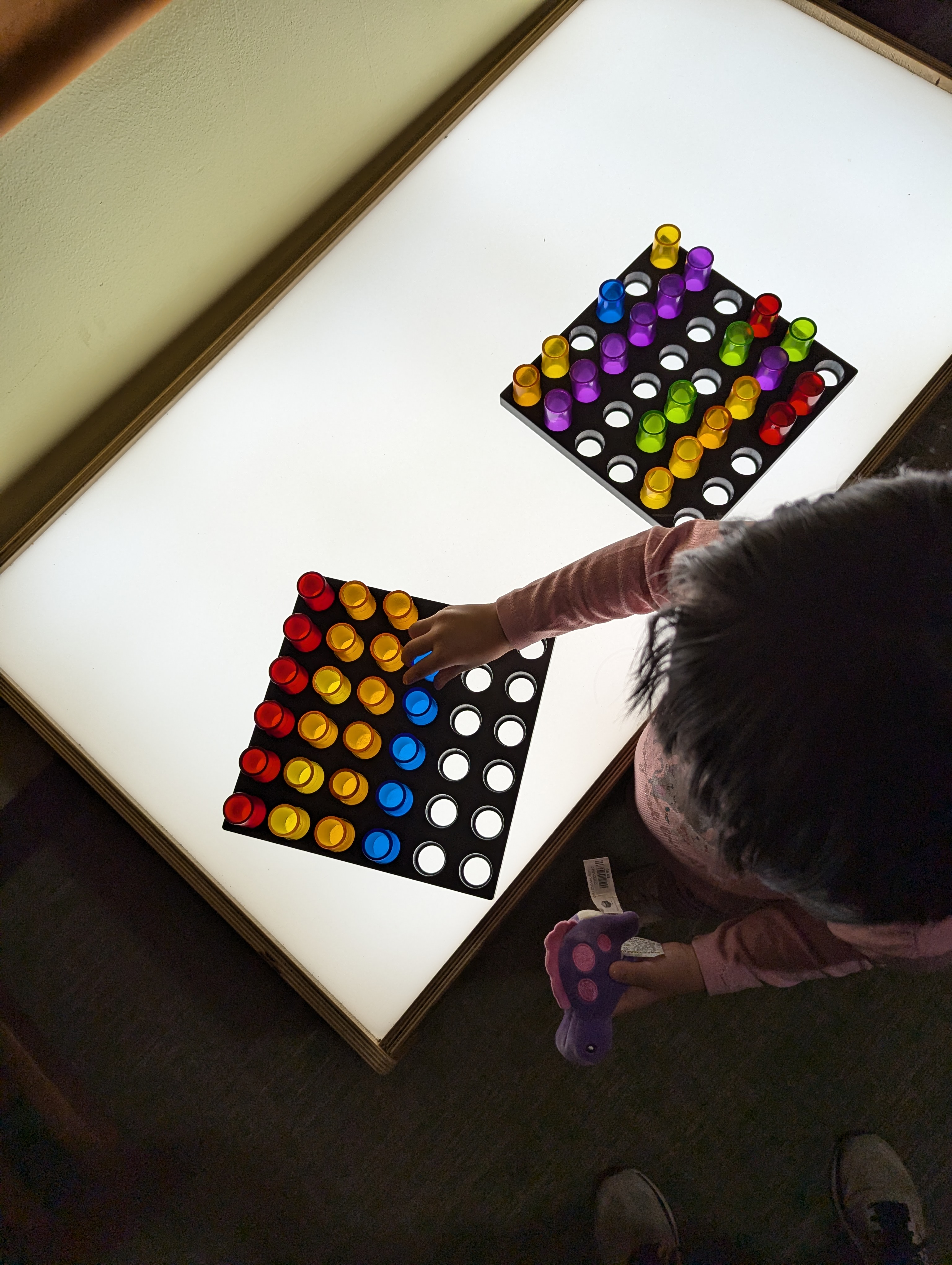It took me months trying to teach a 3-year-old Miss R how to count by ones.
“One, two, three, four…” I tried to show her how to count by pointing and touching the tips of her little fingers. She stared at me as if I was an alien. Then she started nature preschool. Within two weeks, it finally hit her and she started counting everything. I was there to observe the classes half of the time due to frequent separation anxiety episodes in the early weeks. Nope, the teachers never instructed the students on how to count explicitly. Most of the time the kids were just wandering around the campus (which was a small ranch), listening to stories, looking at animals, and doing unstructured play. My kid was especially unsettled because she missed Mommy so much. So how did she learn to count all of a sudden?
To solve this mystery, one must take a closer look on what the teachers did with counting. It was true that they gave no specific math lessons to these preschoolers, but every time the kids lined up for activities (hikes/potty/whatever), they counted aloud, “One, two, three, four… ten, eleven. We are missing two kids!” Someone waiting for a chance to get on the swing? “Let’s count to 30 together.” Jumping rope? “Let’s count!” Kids collecting leaves? “Let’s find out how many you’ve got!”
Counting was everywhere. Counting was life. It was not just Mommy counting fingers for fun. Every number counted has a meaning. That’s when learning clicks. Kids are always looking for meanings when they learn. In fact, it is mostly how we human learns. We learn the best when we are able to associate knowledge with meanings and connections to our lives. When a relationship is present, it’s easier to retain knowledge and keep the interest going.
I have witnessed yet another similar observation two weeks ago. Again, I’ve spent months trying to teach Miss R, now 5, how to count by tens. Unfortunately, I have not learned my lesson from the experience mentioned above. I tried to show her the shortcut to count by using number blocks, fingers, and all sorts of countable objects. Telling her to add a 0 to the end of every single digit number she knows was not helpful at all. She did not understand why the 0 was necessary. She could not recognize anything beyond 9. Why did people even put 1 and 0 together anyway? She was clueless about how the digits 1-0 translate to the word “ten”. It made no sense to her. It was “one-zero”, not “ten”. Playing her anything from Numberblocks to songs from Kids Learning Tube was no use. I was at the end of my wit. Maybe she just wasn’t ready yet, I thought, but would she ever be? If yes, when?
Two Mondays ago, I sought advice from a friend whose kids, ages 4 and 6, were happily counting their tens. As soon as she told me she started reciting the tens to her kids before they could even talk, I was defeated. I felt like I have missed the golden chance of success. No wonder I was now suffering the consequence.
The next day, I decided to recite the tens to Miss R again. Maybe I was a little late, but with enough repetitions, perhaps it would eventually help her remember. “Ten, twenty, thirty…” I thought I would make a little joke out of this very dry sequence, “Seventy, eighty, ninety… TEN-TY!… Oops! I mean… ONE HUNDRED!” She laughed and shouted, “Ten-ty! Yes, ten-ty! Not a hundred. Ten-ty. Again! Again!” I repeated the joke again. She found it hilarious. “Again! Again!” Then a miracle happened. She started reciting all the tens with me. Was I dreaming? “Again! Again!” She chanted. I asked her to do it herself. She recited all the way to 100 perfectly, “Ten, twenty, thirty… eighty, ninety… TEN-TY!” It took only one joke to reach a goal I’ve been preparing her to reach for months. Can you believe that?
Yes, when kids find meanings in their learning, it often takes only a moment for them to grasp it all. In Miss R’s case, it took only seconds for her to comprehend the sequence of tens. She retains it and has been using this new knowledge to support her other math lessons ever since. Like us, kids learn the best when they know what and why they are learning. I love history because I enjoy stories of people. I can relate to how people feel and love how everyone sees the world differently. My friend, on the other hand, hated history because she thought the information was useless. “If the past can no longer be changed, why bother learning?” She said, “We can’t keep looking back.”
There’s no right or wrong answer about which knowledge is more useful. It’s all subjective to the learners. After all, they are the ones to create meanings. As homeschool educators and facilitators, our job is NOT to make learning more meaningful, but to guide the learners in identifying connections with their subjects and materials. It is their work to find out what’s meaningful to them and what not. We are here to give them space and support, and trust that they can make those decisions themselves. They are in charge of their own learning journeys. We have to be mindful of that.
